Popular games built on game engine BASIC
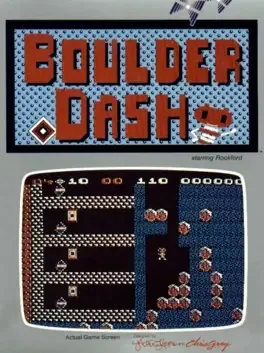
Boulder Dash was originally released in 1984 for Atari 8-bit computers. It was developed and published by First Star Software, and spawned a series of sequels, re-releases, and spinoffs. It also did a great deal to establish and influence the mining genre of video games, which can be seen in modern games such as Minecraft, Spelunky, and Terraria.
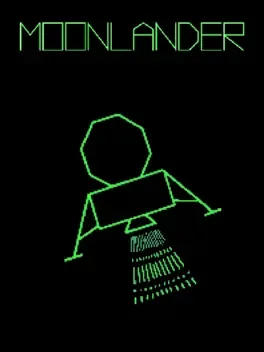
Moonlander (also known as Lunar Lander) is an early computer game made for the DEC GT40 computer and is the first graphical game in the lunar landing simulator subgenre, as well as the first one in real-time. It is notable for being the first video game with an Easter egg, a lone McDonalds on the moon's surface that can be interacted with or destroyed.
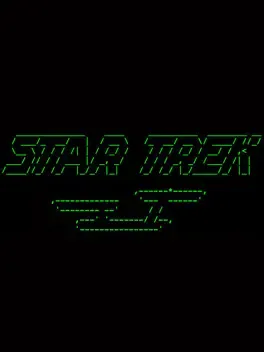
Star Trek is a text-based strategy video game based on the Star Trek television series (1966–69) and originally released in 1971. In the game, the player commands the USS Enterprise on a mission to hunt down and destroy an invading fleet of Klingon warships. The player travels through the 64 quadrants of the galaxy to attack enemy ships with phasers and photon torpedoes in turn-based battles and refuel at starbases. The goal is to eliminate all enemies within a random time limit.
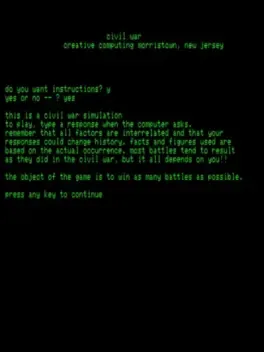
A turn-based, strategic simulation of fourteen real battles of the American Civil War. In single player mode, you play as the Confederacy, while the computer controls the Union. Each turn you have to decide how to allocate your funds on food, ammunition and salaries and choose one out of eight strategies to use in battle (four offensive, four defensive). The sides with fewer casualties wins the battle, and whoever wins eight or more battles wins the war. The game was developed at Lexington High School by students L. Cram, L. Goodie, and D. Hibbard. In 1973, it was compiled and published on "101 BASIC Computer Games" by David H. Ahl, who credited G. Paul and R. Hess of "TIES" for adding a two-player mode
A Jetpac clone that was released as a type-in listing from issue 10-11 / 1987 of Computer Kontakt dated October / November 1987.
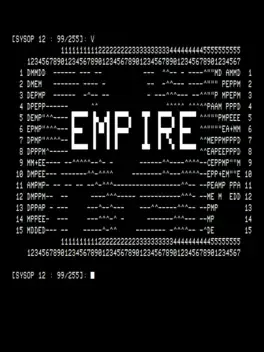
Empire is a 4X wargame created in 1972 by Peter Langston, taking its name from a Reed College board game of the same name. It was initially created by Langston in BASIC on an HP2000 minicomputer at Evergreen State College. When the host computer was retired, the source code to the game was lost. Subsequently, two other authors each independently wrote a new version of the game, both named Empire. In the decades since, numerous other versions of Empire have been developed for a wide variety of platforms. The game is turn-based, with players giving orders at their convenience, and in some versions then executed simultaneously by the game server at set intervals ranging from a few hours to once per day. The game world consists of "sectors", which may be designated as agricultural, industrial, etc. There are dozens of unit types requiring a variety of raw and manufactured materials for their creation. "Blitz" games may last a few hours, typical games a few months, and some larger games up to a year.
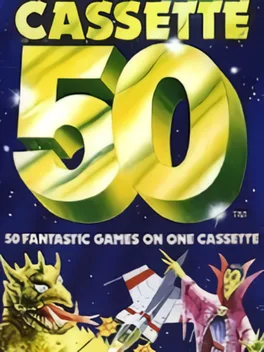
Cassette 50 is a compilation of 50 games that was released for a variety of 8-bit home computers, albeit with different selections of games on different computers. The majority of games within the collection were programmed in BASIC and are widely considered to be of poor quality.
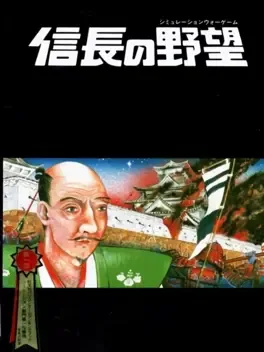
Nobunaga's Ambition, the first of the series, was released in 1983. Players assume the mantle of either Nobunaga Oda or Shingen Takeda and strive to conquer the entire land (17 areas in the Kansai and central Japan region). They manage their country to make it rich, then prepare their military forces. These then attack and defeat surrounding Clans in battle.
While wandering through the savannah, Kevin suddenly feels an appetite building up. If he were a human being, then he would have had a serious problem. Kevin, however, is not a human being but an aardvark. For him the absence of a McDonald's franchise doesn't mean certain death from starvation. Normally he would simply hurl out his tongue towards the first ant or termite crossing his path, but not today. Under the influence of narcotics Kevin's head has become detached from his body, making it too hard to catch anything all by himself. This is where you come in... Press 'A' to let Kevin Aardvark know when to stick out his tongue. Every time you catch an ant, Kevin's head floats to the right. Because this is where the ants are coming from, your job becomes increasingly harder. Every ant you miss will cost you a life, and you only have three of those. After that, it's game over. But should you manage to catch 30 ants, then Kevin has had enough, and you will win the game! Afterwards, press any key to play again.
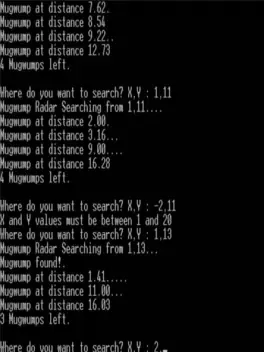
Mugwump is an early video game where the user is tasked with finding four "Mugwumps" that are randomly hidden on a 10x10 grid. It is a text-based game written in BASIC. The user enters a pair of single-digit co-ordinates in the range from 0 to 9 which are the x,y coordinates to scan. If a mugwump is at that location then the user is alerted. Otherwise the user is told the distance from the scanned coordinates to each of the mugwumps that are yet to be found. The game ends after ten turns or when all of the mugwumps have been found.
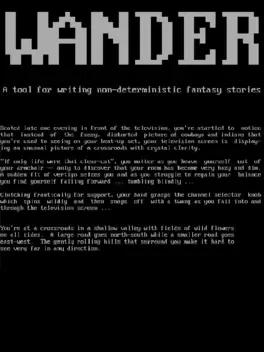
An interactive fiction game / interactive fiction creation utility pre-dating the release of Colossal Cave Adventure.
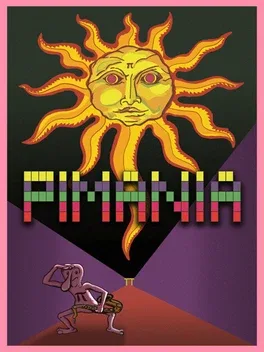
In what is possibly the most baffling text adventure ever devised, navigate a surreal landscape with the aid of the Pi-Man in an attempt to discover the (real world) location of a golden sundial. Originally published in 1982.
These are C64 BASIC games the developer wrote as a teenager in the 1980's. They're slow, glitchy, and barely playable. BOUNCY BALL "My first attempt at what could be called a game. Uses joystick in port 2. Try to place blocks in the ball's path to score points." LOST MAZE "Text adventure/maze game. Complete." AMAZING MAZE "Graphical maze game, player controls animated sprite character. Uses joystick in port 2. Mostly complete." CHOPPER RAID "Unfinished horizontally scrolling shooter, similar to Activision's Chopper Attack." D&D "Simple dungeon crawler, uses custom characters. Uses joystick in port 2. Load & run "D&D", then follow the prompts. Complete." DEFLECTION "Breakout-style game. Uses joystick in port 2. Complete." PLANET DEFENDER "Invaders from space are attacking the planet. If they blast a hole in the ground, patch it by moving your ship over the hole. Uses joystick in port 2. Complete."
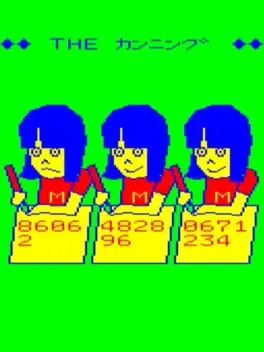
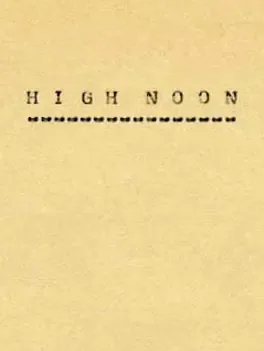
Highnoon is a BASIC game developed by Christopher Gaylo from Syosset High School, New York in early 1970 on a timeshared mainframe computer. The game is single-player and set in the Wild West in 1889. The objective of the game is a showdown between the player and Black Bart. The status of the game, actions available and results of each action are written to the system console as textual descriptions. Turns are taken to either move closer, run, or shoot. Both the player and Bart have four shots and the odds of hitting each other increase as the player closes the 100 paces between each.
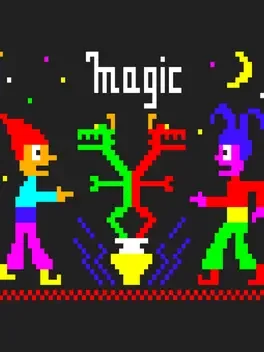
A Pengo clone that was released as a type-in listing from issue 12-1 / 1987 of Computer Kontakt dated December 1986 / January 1987.
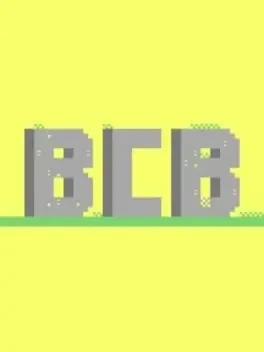
Help the caveman reach his beloved by crossing a territory full of dangers. Run on the wheel, jump and duck to avoid obstacles, such as holes, branches, rocks, etc. that will present themselves along the way.